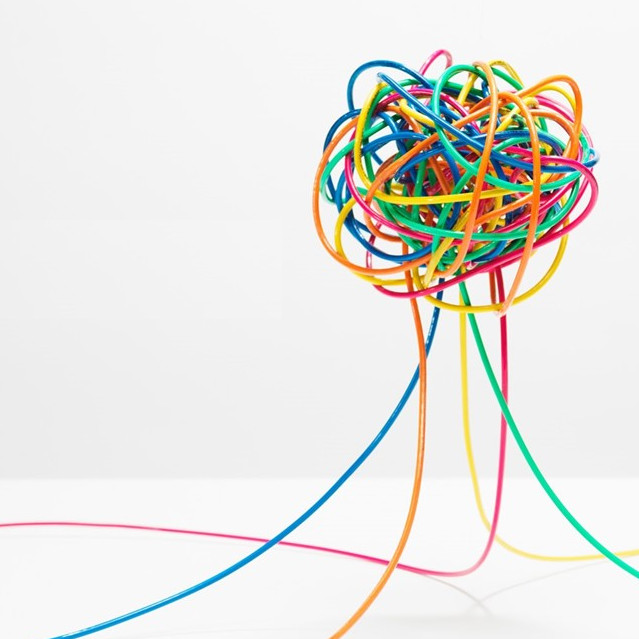
Uncertainty. These are uncertain times. Regardless of the dire circumstances we face with this pandemic, rarely does a day in our lives pass without some degree of uncertainty. Our current predicament simply affirms that we can expect more of it, not less. Most people respond to extreme uncertainties with confusion, frustration, anxiety or even panic. Uncertainty can ignite intense negative feelings. These emotions block us from seeing, thus thinking about, the positives: like opportunities for change, personal growth, creativity and meaningful progress. Emotions (remove the first letter from the word) are energy – they drive, if not dictate, our behaviour. On the plus side, they can incite us to try harder when we fail, keep us safe from harm, urge us to accomplish good things and compel us to nurture life-changing relationships. Our emotions make life worth living, provided we focus on the positives.
Focus is the key to overcoming the ambiguity of uncertainty and finding the upside potential within it. To do so, we need to understand how our comfort for what exists, not what might be (a.k.a. the status quo bias) prevents us from seeing the possibilities. Probabilistic thinking is a state of mind that moves us from the narrow present of binary choices (good/bad) to the bigger picture of what could happen. In a world where every moment can be determined by an infinitely complex set of factors, this future-focused thinking is about challenging what we believe we know. Thinking in shades of probability means identifying what matters, coming up with a sense of the odds and checking our assumptions before we make choices. Life is not a riddle that has a definitive answer. We’ll never know the future with precision. But critically evaluating how the world will most likely look is worth the effort.
Smiling. If common sense doesn’t already tell you what is to follow, there’s a mountain of empirical studies that confirms it. Smiling is a power we all possess that makes others feel good about themselves, less wary and less stressed. Smiles are transferable: when we smile at others, they smile back. The connection we make is contagious. Smiles are also transformative: they help us relax and see the best in others. We like to think animals smile. They do not; Darwin proved that in 1872. Smiling is uniquely human. But all smiles are not equal – in some cultures, a smile can hide embarrassment or discomfort. Paul Ekman, an acknowledged guru in the study of facial expressions, has said there are 18 different types of smiles that signal our emotions.
Smiles are evolutionary and psychosomatic: they both drive and are a consequence of our feelings. We can stimulate positive emotions just by smiling. Some make this a daily habit. And the size of our smiles has nothing to do with how good it makes us feel. Research says one smile is as pleasurable as eating 2,000 chocolate bars (and it’s not fattening). The value of a smile has even been monetized. The bottom line is that smiling makes us more likeable, sociable, competent, memorable and authentic. So … why don’t we smile more? Right now, the world needs that.
Spoiler alert: Among my projects during this period of self-isolation is re-writing a book published 23 years ago. Another is a sequel to Becoming …. The focus is courageous learning. Here is part of the Prologue:
Learning. There’s a myth that learning is for the young. That’s nonsense. We never stop learning. Life is an endless process of self-discovery, of reflecting on the most elemental questions of our existence. Because we must figure out for ourselves what that means. This unpredictable internal dialogue is about how best to reconcile our innate potential with the circumstances we alone must navigate. Potential, for me, is more than intellectual gifts; it’s the inordinate scope of our capabilities for learning, understanding and aspiring to be better. What makes us human is our awareness of the biases and the vulnerabilities that impair that goal and thus our capacity to become adaptive and resilient.
Someone once said, “Life is the art of drawing without an eraser.” We all make mistakes. Do overs are fantasy. To paraphrase John Wooden, the coaching wizard, it’s what we learn after we think we know it all that counts. We learn by growing older, by overcoming things we thought we could not change, by taking risks and by suffering the consequences. That results in perspective or what some call wisdom. As Paul Tillich put it, suffering reminds us we are not who we think we are. Learning is finding answers to the difficult, often complex, questions we should be asking but haven’t yet.
We seek answers that give us peace of mind and truth. We have an insatiable need for resonance and meaning. We can’t examine answers to the questions we don’t ask. When we find them, we try to assemble and connect the dots to create new patterns of sense and sensibility. (Sense enables us to act with restraint; sensibility acknowledges the clash that occurs when our emotions overrule good judgement.) When we finally do get around to asking these character-defining questions, and contemplating the answers, we can add them to our unique reservoir of knowledge and start living different lives. So I am always asking. As Norman Douglas said “There are some things you can’t learn from others. You have to pass through the fire.” Then figure them out for yourself.
